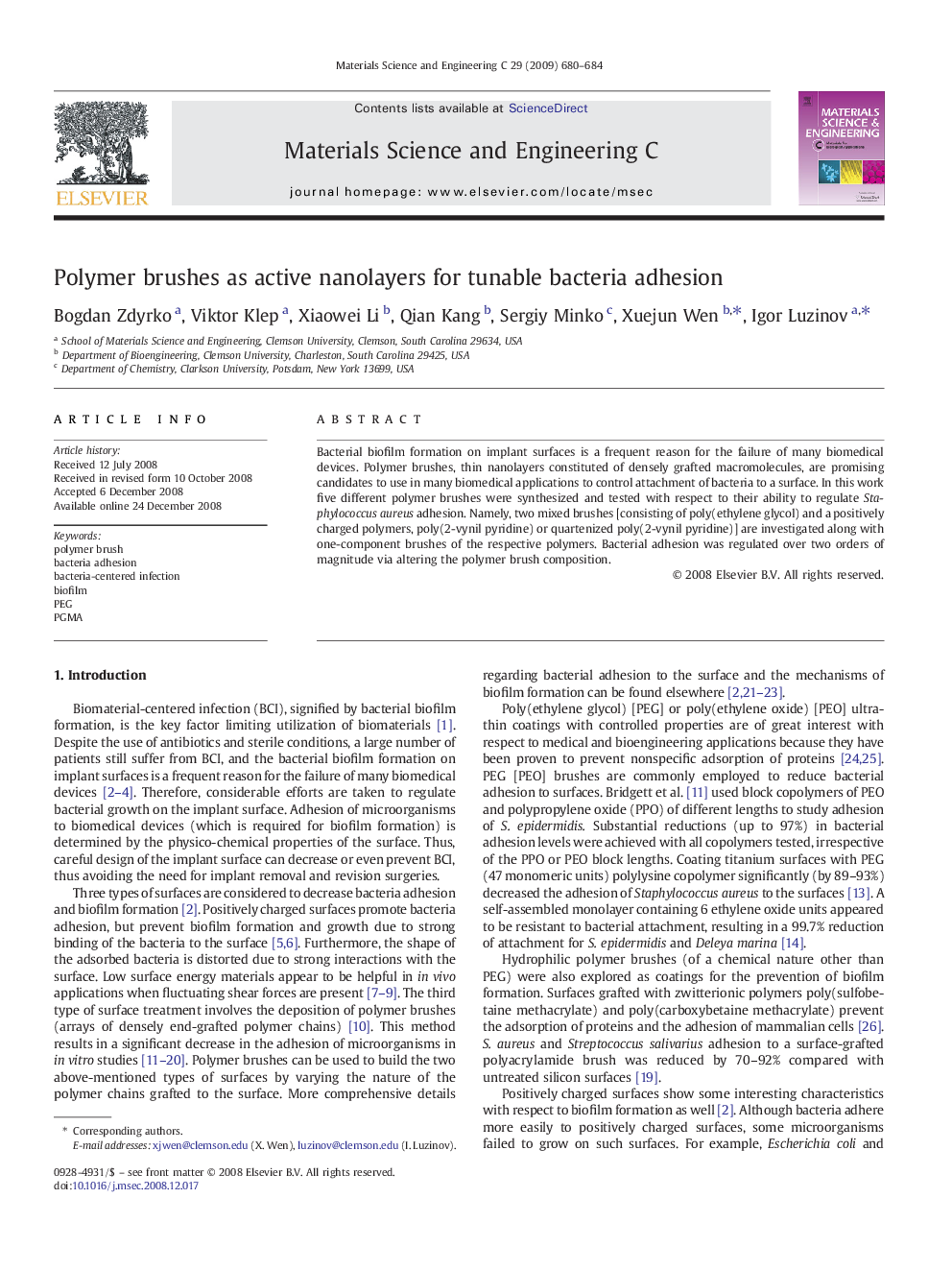| Article ID | Journal | Published Year | Pages | File Type |
|---|---|---|---|---|
| 1430127 | Materials Science and Engineering: C | 2009 | 5 Pages |
Bacterial biofilm formation on implant surfaces is a frequent reason for the failure of many biomedical devices. Polymer brushes, thin nanolayers constituted of densely grafted macromolecules, are promising candidates to use in many biomedical applications to control attachment of bacteria to a surface. In this work five different polymer brushes were synthesized and tested with respect to their ability to regulate Staphylococcus aureus adhesion. Namely, two mixed brushes [consisting of poly(ethylene glycol) and a positively charged polymers, poly(2-vynil pyridine) or quartenized poly(2-vynil pyridine)] are investigated along with one-component brushes of the respective polymers. Bacterial adhesion was regulated over two orders of magnitude via altering the polymer brush composition.
